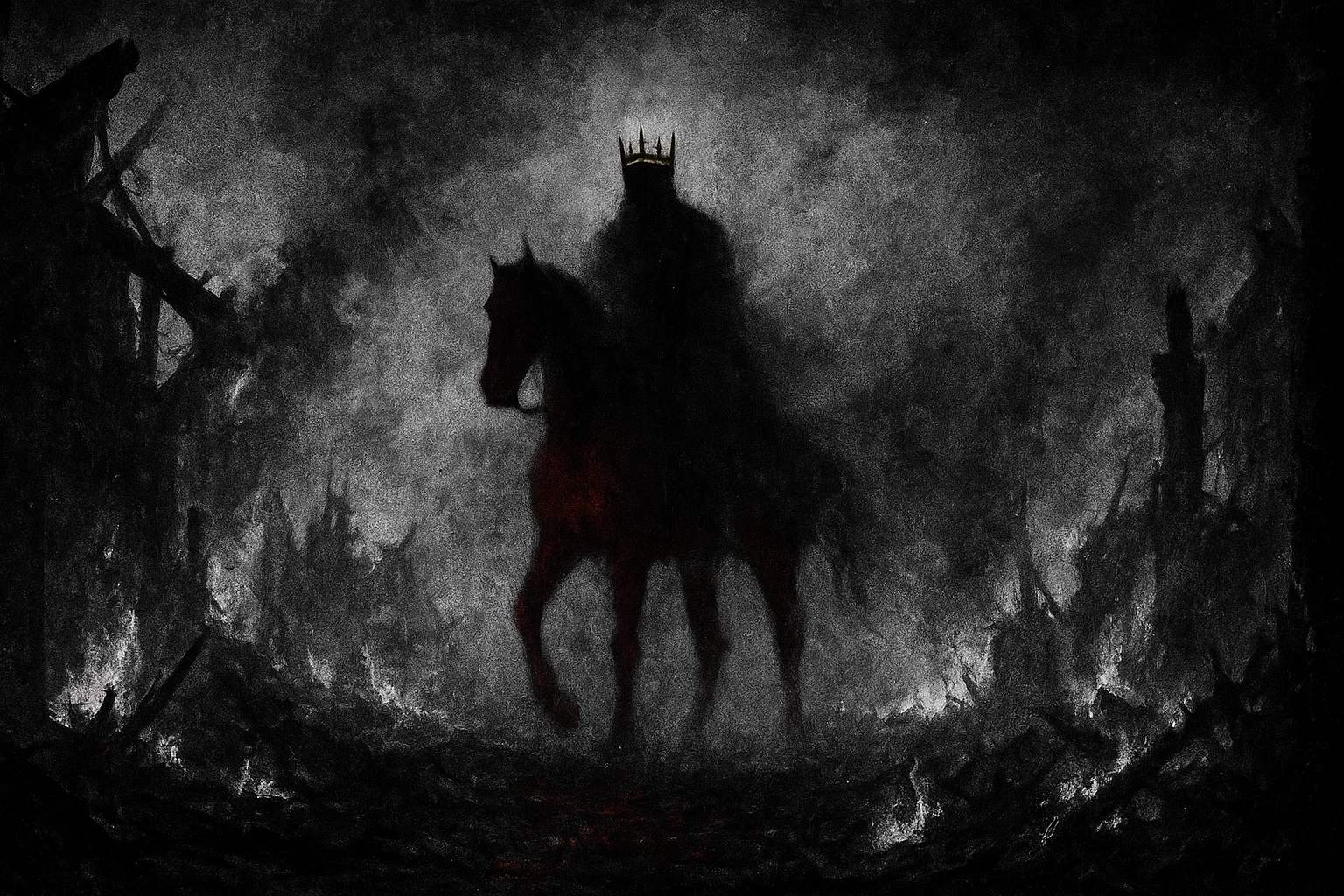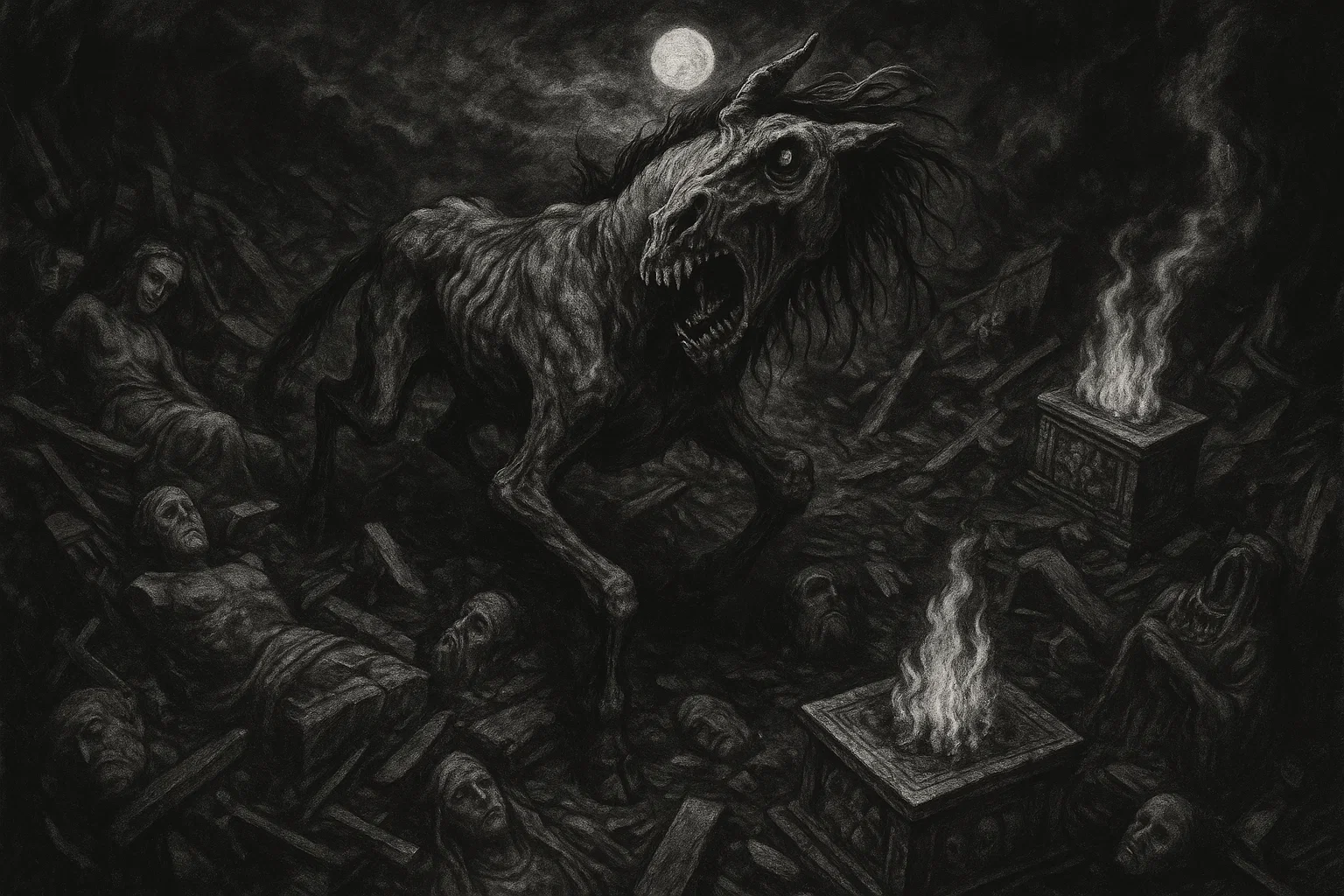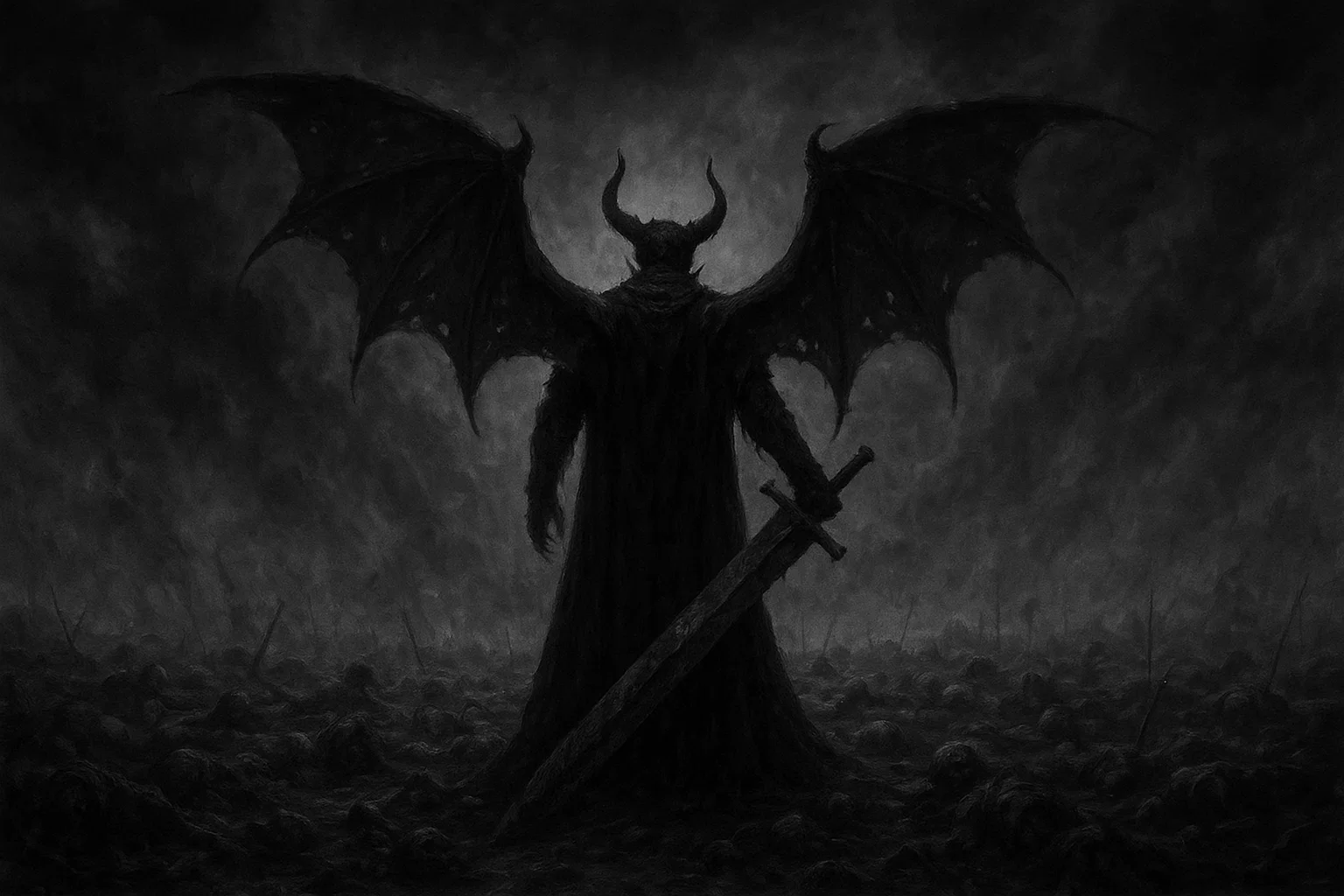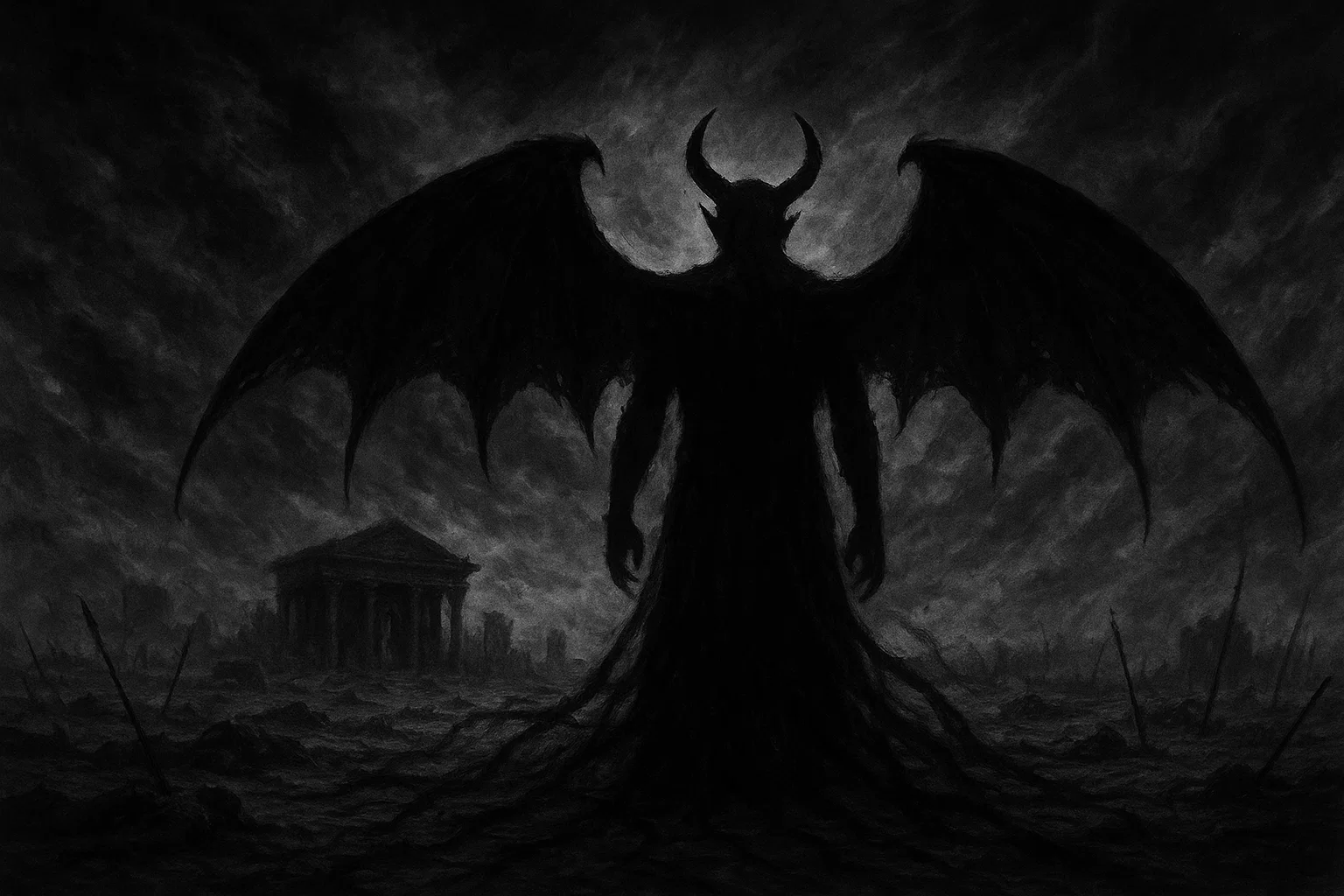Have you ever wondered what lurks in the shadows of ancient covenants, where promises turn into chains of damnation? Balberith, the infamous demon known as the Lord of the Covenant, embodies the treacherous allure of forbidden knowledge and unholy pacts.
This malevolent entity, once a figure in Canaanite lore, has evolved into a symbol of deception, blasphemy, and murder in demonological traditions, tempting mortals with illusions of power and wealth.
What secrets does Balberith hold about the past, present, and future, and at what cost do they come? As a duke in the infernal hierarchy, this demon notarizes deals with the Devil himself, binding souls to eternal torment. Its origins trace back to ancient Near Eastern deities, but in the grimoires of occult history, Balberith stands as a warning against the dangers of straying from righteousness.
This article uncovers the dark layers of Balberith‘s lore, from its Canaanite roots to its role as a corrupter in Hell. Readers intrigued by demonology, folklore, and the occult will find a thorough exploration of this demon’s powers, hierarchy, and symbolic associations, shedding light on why it remains a chilling figure in supernatural narratives.
Table of Contents
Key Information
| Attribute | Details |
|---|---|
| Name | Balberith, Baalberith, Berith, Baal-Berith, Beale, Beal, Bolfri, Bofry, Elberith |
| Title | Scribe of Hell, Chief Secretary of Hell, Master of Ceremonies, Grand Pontiff, Duke of Hell, Lord of the Covenant, Head of Public Archives |
| Gender | Male |
| Role | Secretary and archivist of Hell, notarizes infernal pacts, tempts humans to blasphemy, murder, and apostasy, keeper of demonic records |
| Hierarchy | Duke of Hell, Second Order Demon, Master of the Infernal Alliance, Chief Secretary under Lucifer |
| Servitors | 26 legions of demons, including lesser spirits focused on deception and alchemy |
| Superior Demon | Lucifer (supreme ruler), Satan (prince of darkness), Beelzebub (lord of the flies) |
| Powers | Transmutes base metals into gold, grants dignities and titles, provides true answers about past, present, and future, tempts to blasphemy and murder, manipulates perspectives, superhuman strength and agility, fire manipulation |
| Appearance | A soldier in red clothing, wearing a golden crown, riding a red horse, sometimes with red skin or as a monstrous figure |
| Etymology | Derived from Hebrew Baʿal Berith (Lord of the Covenant), linked to Canaanite worship, Akkadian biritu (fetter or bond), symbolizing binding agreements |
| Associated Figures | Abimelech (Biblical destroyer of its temple), Sister Madeleine (Aix-en-Provence possessions), Johann Weyer (demonologist), Father Sebastien Michaelis (exorcist), St. Barnabas (opposing saint) |
| Weaknesses | Requires a silver ring for truthful summoning, countered by St. Barnabas, vulnerable to divine invocations and exorcisms |
| Opposing Angel/Saint | St. Barnabas, angelic forces of truth and covenant like Michael |
| Equipment/Tools | Silver ring (for summoning), golden crown (symbol of authority), red horse (mount for infernal rides), alchemical tools for metal transmutation |
| Pantheon | Originally Canaanite (as a deity), later Christian demonology, Goetic tradition, occult grimoires |
Etymology
The name Balberith originates from the Hebrew phrase Baʿal Berith, which translates directly to “Lord of the Covenant.” This term combines baʿal, meaning “lord,” “master,” or “owner,” a title commonly applied to various deities in ancient Near Eastern cultures, with berith, denoting a covenant, treaty, or binding agreement.
In Biblical contexts, this name reflects the demon’s association with unholy pacts that ensnare souls, twisting sacred bonds into tools of damnation.
Scholars trace deeper roots to the Akkadian word biritu, signifying “fetter” or “bond,” emphasizing the constraining nature of covenants under Balberith‘s influence.
This etymological link underscores the demon’s role as a binder of fates, where agreements lead not to prosperity but to spiritual ruin. In some interpretations, Berith connects to Phoenician and Ugaritic terms for alliances, highlighting its evolution from a local Canaanite god to a feared infernal entity.
Alternative spellings like Baalberith, Berith, and Elberith appear in grimoires, each variant preserving the core theme of lordship over covenants. For instance, Bolfri and Bofry emerge in necromantic texts, possibly corruptions reflecting phonetic shifts across languages.
The name’s symbolic weight lies in its representation of false promises; Balberith lures mortals with covenants of power, only to deliver deception and doom. This etymology not only reveals linguistic origins but also the demon’s thematic essence in folklore as a corrupter of oaths and temptress of the ambitious.
In demonological studies, the name’s connection to Baal-zebub (Lord of the Flies) has been speculated, with some suggesting Berith as a euphemism for idolatrous devotion, where worshippers form unbreakable bonds with evil.
This interpretation aligns with Biblical condemnations of idolatry, portraying Balberith as the antithesis of divine covenants. Overall, the etymology paints Balberith as an ancient force of binding malice, its name a whisper of eternal entrapment in the annals of occult history.
You May Also Like: Who Was Apep, the Ancient Demon of Darkness?
What Does the Demon Balberith Look Like?
Balberith manifests in a form designed to intimidate and deceive, appearing as a fierce soldier dressed in vivid red garments that symbolize bloodshed and infernal fire.
Atop his head rests a gleaming golden crown, denoting his high status as a duke among demons, while he rides a powerful red horse, evoking images of war and conquest. His voice is described as clear yet subtle, allowing him to whisper lies that sound like undeniable truths.
Some accounts depict Balberith with reddish skin, enhancing his fiery, hellish aura, and he may carry weapons or tools associated with alchemy, such as a scepter or transmutation rod. This humanoid yet monstrous appearance reflects his fallen cherub nature, blending martial prowess with deceptive elegance.
In rarer descriptions, he assumes a more grotesque form to terrify summoners who fail to control him properly.
Historical and Mythological Background
The origins of Balberith trace back to the ancient Canaanite religion, where it was worshipped as Baʿal Berith, the Lord of the Covenant, in the city of Shechem around the second millennium BCE.
This deity oversaw oaths and treaties among the Canaanites, a people whose pantheon included powerful figures like El, the supreme creator god, and Asherah, his consort. Baʿal Berith likely represented a localized form of Baal, the storm and fertility god, merged with covenantal aspects, reflecting the importance of alliances in Canaanite society.
Connections to other ancient deities abound. In Ugaritic myths, Baal battles Yam (the sea god) and Mot (death), stories that may parallel Balberith‘s later demonic traits of conflict and temptation.
Some scholars link Baʿal Berith to Mesopotamian Hadad, another storm deity, suggesting cultural exchanges where covenant gods were adapted across regions. Further afield, parallels exist with Egyptian Set, a god of chaos and foreign pacts, or even Hittite treaty gods like those in the vassal treaties of the Hittite Empire, emphasizing binding agreements enforced by divine wrath.
In Phoenician lore, Berith might connect to Berouth, a primordial entity tied to creation and bonds, though this remains speculative. Globally, similarities appear with Norse Loki, a trickster binding fates through deceitful oaths, or Aztec Tezcatlipoca, who tempts with illusory power. These connections highlight Balberith‘s archetype as a corrupter of sacred bonds, demonized as monotheistic religions rose.
The Temple of Baal-Berith in Shechem
One of the earliest legends involves the temple of Baal-Berith in Shechem, as recounted in the Book of Judges. After Gideon’s death around 1200 BCE, the Israelites abandoned their covenant with Yahweh and turned to Baal-Berith, erecting a grand temple funded by offerings. This act of idolatry invited divine judgment, manifesting through Abimelech, Gideon’s son, who used 70 pieces of silver from the temple to hire mercenaries and seize power.
Abimelech’s interactions with Baal-Berith were marked by betrayal; he slaughtered his brothers to consolidate rule, only to destroy the temple later when Shechemites rebelled. Hiding in the temple’s tower, the people invoked Baal-Berith for protection, but Abimelech set it ablaze, killing a thousand.
This story portrays Balberith as a false protector, whose worship leads to violence and ruin, foreshadowing its demonic transformation.
You May Also Like: Anamelech: The Forgotten Lunar Demon of Ill Omens
The Aix-en-Provence Possessions and Exorcism Revelations
In 1611, during the Aix-en-Provence possessions in France, Balberith emerged as a key possessing demon afflicting Ursuline nuns, particularly Sister Madeleine Demandols. Under possession, Madeleine exhibited unnatural strength and knowledge, attributing her torment to Balberith and other demons like Asmodeus and Beelzebub. During exorcisms led by Father Sebastien Michaelis, Balberith spoke through her, revealing hierarchies of Hell and naming adversaries.
Balberith boasted of its role as Hell’s scribe, detailing pacts and sins, but also disclosed weaknesses, such as opposition from St. Barnabas. Interactions included Balberith tempting Madeleine to blasphemy, urging her to renounce faith.
The exorcism succeeded through prayers, expelling Balberith and highlighting its cunning yet defeatable nature. This event solidified Balberith‘s lore in European demonology, linking it to real-world spiritual warfare.
Balberith as the Fallen Cherub and Infernal Bureaucrat
In medieval demonology, Balberith is depicted as a fallen cherub, once an angelic being of high order who rebelled with Lucifer. Legends narrate its descent into Hell, where it assumed administrative duties, notarizing pacts that bind mortals to Satan. One tale from grimoires describes Balberith deceiving alchemists with promises of gold, only to claim their souls upon failure.
Interactions with other demons include serving under Lucifer in the infernal court, allied with dukes like Agares for shared temptations. Adversaries among demons might include those vying for archival control, though specifics are scarce. In one occult narrative, Balberith clashes with angelic forces during summonings, its horse charging against divine light.
Connections to Global Myths and Demonic Parallels
Beyond Canaan, Balberith‘s covenant theme echoes in Babylonian myths of Marduk enforcing divine treaties, or Greek Hades binding souls in the underworld. In African Yoruba traditions, Eshu as a trickster of crossroads pacts mirrors Balberith‘s deceptive deals. Native American legends of coyote spirits tempting with false promises offer similar archetypes.
In Islamic jinn lore, ifrits binding humans through oaths parallel Balberith. These global connections portray Balberith as a universal symbol of corrupted bonds, its myths warning against deals with dark forces across cultures.
You May Also Like: Alastor: Greek Avenger Turned Executioner of Hell
Historical Mentions
| Text/Grimoire | Year | Description | Excerpt |
|---|---|---|---|
| Book of Judges | ~1100 BCE | Portrays Baal-Berith as an idolatrous god in Shechem, whose temple funds Abimelech’s murders. | “And they gave him threescore and ten pieces of silver out of the house of Baalberith, wherewith Abimelech hired vain and light persons, which followed him.” (Judges 9:4) |
| Pseudomonarchia Daemonum | 1577 | Describes Berith as a duke commanding 26 legions, liar unless constrained, transmuter of metals. | “Berith is a great and a terrible duke, and hath three names. Of some he is called Beall; of the Jewes Berith; of Nigromancers Bolfry.” |
| The Admirable History | 1612 | Chronicles Berith’s possession in Aix-en-Provence, revealing demonic names and saints. | “Baalberith volunteered not only his own name and the names of all the other demons possessing her, but the names of the saints who would be most effective in opposing them.” |
| The Lesser Key of Solomon (Goetia) | 1904 | Lists Berith as the 28th spirit, a mighty duke with alchemical powers and prophetic abilities. | “The Twenty-eighth Spirit in Order, as Solomon bound them, is named Berith. He is a Mighty, Great, and Terrible Duke.” |
Balberith’s Powers and Abilities
Balberith possesses a sinister arsenal of powers tailored to deception and corruption, distinguishing it from lesser demons. Its signature ability is the transmutation of base metals into gold, an alchemical feat that lures greedy mortals into pacts, promising riches but delivering spiritual bankruptcy. This power exploits human avarice, tempting alchemists and the ambitious to forsake morality for illusory wealth.
Another unique trait is granting dignities and titles, elevating individuals in society through infernal influence, often at the cost of betrayal or crime.
Balberith provides true answers about the past, present, and future when properly summoned, but twists information to sow discord if unconstrained. Its temptations to blasphemy encourage renunciation of faith, leading to apostasy, while urges to murder fuel violence and vengeance.
In newer interpretations, including pop culture depictions in video games like Shin Megami Tensei, Balberith exhibits fire manipulation, hurling flames to incinerate foes, and perspective manipulation, altering perceptions to make lies appear as truths.
Superhuman strength and agility allow it to overpower victims physically. These abilities corrupt by preying on weaknesses—greed, ambition, curiosity—binding souls to Hell through incremental sins.
Powers and Abilities Breakdown
| Power/Ability | Description | Source | How It Tempts/Corrupts Humans | Countermeasure |
|---|---|---|---|---|
| Transmutation of Metals | Alchemically converts any metal to gold, symbolizing false prosperity. | Goetia, Pseudomonarchia Daemonum | Entices with wealth, leading to obsession, theft, or pacts. | St. Barnabas invocation, alchemical wards |
| Granting Dignities | Bestows social status, honors, and power through demonic intervention. | Goetia | Fuels pride and ambition, prompting unethical climbs to power. | Humility prayers, divine merit-seeking |
| Prophetic Knowledge | Reveals truths about timelines, but lies without silver ring constraint. | Goetia, Pseudomonarchia Daemonum | Exploits desire for foresight, causing reliance on evil sources. | Reliance on holy prophecy, faith |
| Temptation to Blasphemy | Incites rejection of divine authority, fostering eternal damnation. | The Admirable History | Erodes faith, leading to spiritual isolation and sin. | Exorcism rituals, saintly intercession |
| Temptation to Murder | Provokes homicidal urges, appealing to rage or greed. | The Admirable History | Drives to violence, staining souls with irredeemable acts. | Repentance, anger management through prayer |
| Fire Manipulation | Hurls infernal flames, causing destruction and pain. | Modern demonology interpretations | Terrifies and harms, tempting survival through submission. | Holy water, fire-resistant relics |
| Perspective Manipulation | Alters perceptions to make deceptions seem real. | Pop culture (e.g., games) | Confuses reality, leading to poor decisions and moral decay. | Grounding in truth, angelic guidance |
| Superhuman Strength/Agility | Enhances physical prowess for combat or intimidation. | Demonological folklore | Overpowers victims, tempting might-makes-right philosophy. | Physical restraints, divine strength |
You May Also Like: Is Ahriman the Oldest Demon in History?
How to Counter Balberith’s Powers
Defending against Balberith demands vigilance and spiritual fortitude. The primary counter is invoking St. Barnabas, whose prayers disrupt the demon’s influence, as revealed in historical possessions. During summonings, a silver ring worn on the left hand and held to the face compels truthfulness, preventing deceptive responses.
Exorcisms involving holy water, crucifixes, and recitations from sacred texts can expel Balberith from possessed individuals. To resist temptations like blasphemy or murder, maintaining strong faith and community support is crucial, as isolation amplifies its whispers. Alchemical wards, such as circles of salt or iron, hinder metal transmutation attempts.
For prophetic manipulations, cross-verifying information with divine sources counters falsehoods. Overall, countermeasures emphasize reliance on goodness, rejecting Balberith‘s covenants through repentance and angelic aid.
Balberith’s Role in the Hierarchy of Hell
Balberith occupies a prestigious yet insidious position as a Duke of Hell in the infernal hierarchy, commanding 26 legions of demons specialized in deception, alchemy, and archival duties. As the chief secretary and head of Hell’s public archives, it maintains meticulous records of all pacts, sins, and damnations, serving as the bureaucratic backbone of the underworld. This role places Balberith in the second order of demons, below the supreme rulers but above lesser spirits.
In various demonological classifications, Balberith rules over domains associated with blasphemy and murder, perhaps a specific circle or archive vault in Hell’s vast bureaucracy.
Its superiors include Lucifer, the ultimate emperor, Satan as prince of darkness, and Beelzebub, lord of the flies, to whom it reports on mortal temptations. Notable subordinates are unnamed lesser demons in its legions, tasked with forging false documents or spying on humans.
Allied demons might include other dukes like Agares (for linguistic deceptions) and Valefor (for theft aiding temptations), forming an infernal alliance for coordinated corruption. Adversaries within Hell could be rival secretaries or demons like Astaroth, competing for influence over vanity and sloth. Balberith‘s relationships emphasize utility; it aids superiors in pact enforcement while undermining potential threats through archived secrets.
This hierarchical placement underscores Balberith‘s importance in sustaining Hell’s order through deception, making it indispensable yet eternally subservient.
Astrological Associations and Symbolism
Balberith carries rich astrological and symbolic associations that enhance its demonic allure. Linked to Venus for seductive temptations and Mars for martial aggression, its influence peaks under these planets, amplifying powers during alignments. Zodiacally, it connects to Gemini for duality in truths and lies, or Scorpio for transformative alchemy and hidden pacts.
Elementally, Balberith aligns with fire for destructive flames and earth for metallic transmutations, embodying chaos and stability twisted into evil. Metals like gold (for wealth illusions) and copper (Venusian conductivity) symbolize its alchemical essence, while crystals such as bloodstone (heliotrope) aid in summoning, representing blood covenants and protection against its wrath—ironically, as it wards evil.
Colors red and gold dominate, signifying bloodshed, passion, and false riches. Numbers like 26 (legions) and 28 (Goetic order) hold numerological power, used in rituals. Days of influence include Tuesdays (Mars) or Fridays (Venus), with incense like sandalwood or myrrh evoking its presence. Symbolically, the red horse represents conquest, the crown authority, and alchemical symbols like the philosopher’s stone tie to its transmutative deceit.
| Astrological/Symbolic Element | Association | Significance |
|---|---|---|
| Planet | Venus (seduction), Mars (aggression) | Temptation, war, transformation |
| Zodiac | Gemini (duality), Scorpio (secrets) | Lies vs. truth, hidden pacts |
| Element | Fire (destruction), Earth (stability) | Infernal flames, metal changes |
| Metal | Gold (wealth), Copper (conductivity) | False riches, alchemical bonds |
| Crystal | Bloodstone (heliotrope), Onyx | Blood covenants, dark protection |
| Color | Red (blood), Gold (illusion) | Violence, deceptive prosperity |
| Number | 26 (legions), 28 (Goetic rank) | Authority, order in chaos |
| Incense | Sandalwood, Myrrh, Heliotrope | Summoning, mystical enhancement |
| Day | Tuesday (Mars), Friday (Venus) | Peak power for rituals |
| Tarot Card | The Chariot (conquest), The Devil | Control, bondage |
You May Also Like: Bathsheba Sherman True Story: The Conjuring’s Real Witch?
Balberith’s Sigil
The sigil of Balberith is a intricate geometric emblem from Goetic traditions, consisting of curved lines and intersections that symbolize binding covenants and alchemical transformations. Drawn in red ink on parchment or engraved on silver, it serves as a focal point for summoning, channeling the demon’s energy while containing its malice. Precision in its creation is vital; errors invite uncontrolled deception.
Associated symbols extend to ritual offerings, enhancing invocations or protections. These elements, drawn from occult lore, reinforce Balberith’s themes of temptation and bondage.
| Symbol/Item | Association/Meaning | Use in Rituals |
|---|---|---|
| Sigil | Geometric binding for covenants | Drawn for summoning, focus of invocation |
| Red Horse | Martial power, conquest | Visualized or effigy in warlike rites |
| Golden Crown | Infernal authority, false nobility | Worn or placed on altar for dignity grants |
| Black Chicken | Sacrifice for blood pacts | Offered to seal deals, crossroads at night |
| Heliotrope Incense | Spiritual connection, blood symbolism | Burned to attract presence |
| Sandalwood | Focus and purity twisted to evil | Enhances ritual concentration |
| Silver Ring | Constraint for truth | Worn to compel honest responses |
| Bloodstone Crystal | Covenant blood, protection against deceit | Held for warding during exorcisms |
| Myrrh Incense | Mystical enhancement, death associations | Used in possession countermeasures |
| Onyx Crystal | Dark protection, absorption of negativity | Placed in circles to contain power |
Comparison with Other Demons
| Demon | Rank | Powers | Appearance | Weaknesses |
|---|---|---|---|---|
| Agares | Duke | Teaches languages, causes earthquakes | Old man on a crocodile | Holy names, angelic seals |
| Valefor | Duke | Steals treasures, fosters false loyalty | Lion with a man’s head | Divine truth, repentance |
| Amon | Marquis | Reconciles foes, foretells future | Wolf with serpent’s tail | Exorcism, faith in unity |
| Barbatos | Duke | Understands animals, reveals treasures | Archer with horned helmet | Spiritual purity, animal wards |
| Paimon | King | Grants arts knowledge, controls spirits | Man on a camel | Holy relics, humility |
| Buer | President | Heals illnesses, teaches philosophy | Lion-headed with goat legs | Prayer, medical faith |
| Gusion | Duke | Reveals truths, grants honors | Baboon-like figure | Sacred chants, truth-seeking |
| Sitri | Prince | Incites lust and love | Leopard with griffin wings | Chastity, emotional discipline |
| Beleth | King | Causes obsessive love, commands legions | King on a pale horse | Silver tools, firm commands |
| Leraje | Marquis | Provokes battles, heals wounds | Archer in green attire | Peace rituals, healing prayers |
You May Also Like: Swiatek: Murder, Cannibalism, and a Wolf’s Curse
Conclusion
Balberith endures as a profound emblem of deception in demonology, its Canaanite origins twisted into a narrative of infernal corruption. From tempting with gold to binding souls in pacts, this demon exemplifies the perils of unchecked ambition and broken faith. Its lore serves as a stark reminder that covenants with darkness yield only ruin.
As folklore evolves, Balberith‘s influence persists in modern interpretations, warning against the seductive whispers of evil. Exploring its depths reveals not just a demon, but a mirror to human frailties, urging vigilance in the face of temptation.






